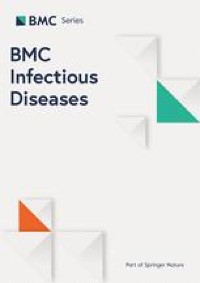Sepsis following acute pyelonephritis caused by Trueperella ... - BMC Infectious Diseases

We encountered a case of sepsis following acute pyelonephritis caused by T. bernardiae, a commensal bacterium found on the skin and in the upper respiratory tract. Although T. bernardiae is a rare cause of infection, it was detected in two sets of blood cultures and in a urine culture in the present case. Moreover, it was observed to be the causative agent of the infection, which was considered to have occurred because the patient was very old, bedridden with reduced ADL, and used diapers for defecation.
In this case, multiple bacteria were initially detected in a urine culture. As ampicillin/sulbactam was effective, Pseudomonas sp. was not considered for treatment. Other detected bacteria were sensitive to ampicillin/sulbactam and cefazolin. Finally, only T. bernardiae was detected in blood cultures and was determined to be the initiating bacterium for sepsis. It seems possible that the urinary tract was also infected with several other bacteria.
In general, we do not routinely keep images in our daily clinical practice. Unfortunately, the Gram staining and culture results in this case were not recorded because there is no laboratory in the hospital to obtain the information, and the results were outsourced to another laboratory outside of the hospital.
Regarding the antimicrobial susceptibility of T. bernardiae, resistance to penicillins [14, 15], aminoglycosides [14], macrolides [16,17,18,19], quinolones [19], sulfamethoxazole/trimethoprim [14, 18], and fosfomycin [8] have been reported. In this case, the patient was non-responsive to quinolones and sulfamethoxazole/trimethoprim. No cephalosporin-resistant bacteria have been reported.
As there are no reports of T. bernardiae resistance to β-lactamase-containing penicillin, carbapenems, and cephems (although resistance to penicillin has been reported), we suggest that before the results of susceptibility testing are known, antimicrobial therapy should include β-lactamase-containing penicillin, if the patient is in good general condition, and carbapenems, if the patient is in poor general condition.
As reports of infections caused by T. bernardiae are rare, a comprehensive literature review was conducted. Thirty articles were searched using the keywords "Trueperella bernardiae," "Arcanobacterium bernardiae," or "Actinomyces bernardiae" on PubMed database. The search identified 19 case reports (including 27 cases) since 1996 (Table 3). In addition, five case reports (including five cases) related to these articles were not archived in PubMed [5,6,7,8, 14,15,16,17,18,19,20,21,22,23,24,25,26,27,28,29,30,31,32,33]. (Last PubMed search: November 28, 2022).
The median age of the 32 patients (14 men and 18 women) was 62 years (range, 5–91 years), with no obvious age or sex disparity. T. bernardiae was often detected in the presence of other organisms, and the prognosis was good in many cases. Among the reported cases, nine, six, four, four, and two cases were of British, American, French, Spanish, and Japanese patients, respectively, while there was one case of Belgian, Chilean, Brazilian, Korean, Italian, Thai, and Danish patient each. The underlying diseases varied from diabetes mellitus to post-arthroplasty but were most frequently identified in patients with an immunocompromised status. The sites of infection included the urinary tract, blood, brain abscess, and breast abscess in five, 12, two, and two cases, respectively, and in other sites (including the skin, surgical sites, and joints). In the present case, the organism was detected in two sets of blood and urine cultures, suggesting that sepsis might have occurred, following the acute pyelonephritis caused by T. bernardiae.
The long-term decline in physical activity due to aging, loss of strength and motivation, and various diseases of the musculoskeletal and cardiovascular systems may lead to disuse syndrome [34, 35]. As disuse syndrome progresses, the patient develops secondary disabilities, such as muscle weakness, joint contractures, circulatory disorders, and psychiatric symptoms, such as depression and dementia. As a result, they become susceptible to infection. In addition, diaper users have a high incidence of chronic cystitis [36, 37]. In the present case, the patient was bedridden, very old, and her ADL had decreased, so she could have been easily infected. Since T. bernardiae is a commensal bacterium of the skin, it may have been transmitted via the diaper.
T. bernardiae is frequently reported in multiple bacterial infections. Therefore, when urinary tract infection occurs in the presence of several bacterial infections in old diaper-using patients with reduced ADL, such as in this case, it is necessary to note the presence of rare bacteria that can cause opportunistic infections.
Our study had some limitations. First, as this study is a case report, it is difficult to generalize the findings to other very old, diaper-using, bedridden patients with reduced ADL. In addition, the long-term health effects of T. bernardiae infection remain unknown. In the future, we hope to investigate the long-term health effects of T. bernardiae infection by conducting long-term observations of this patient population.
Comments
Post a Comment